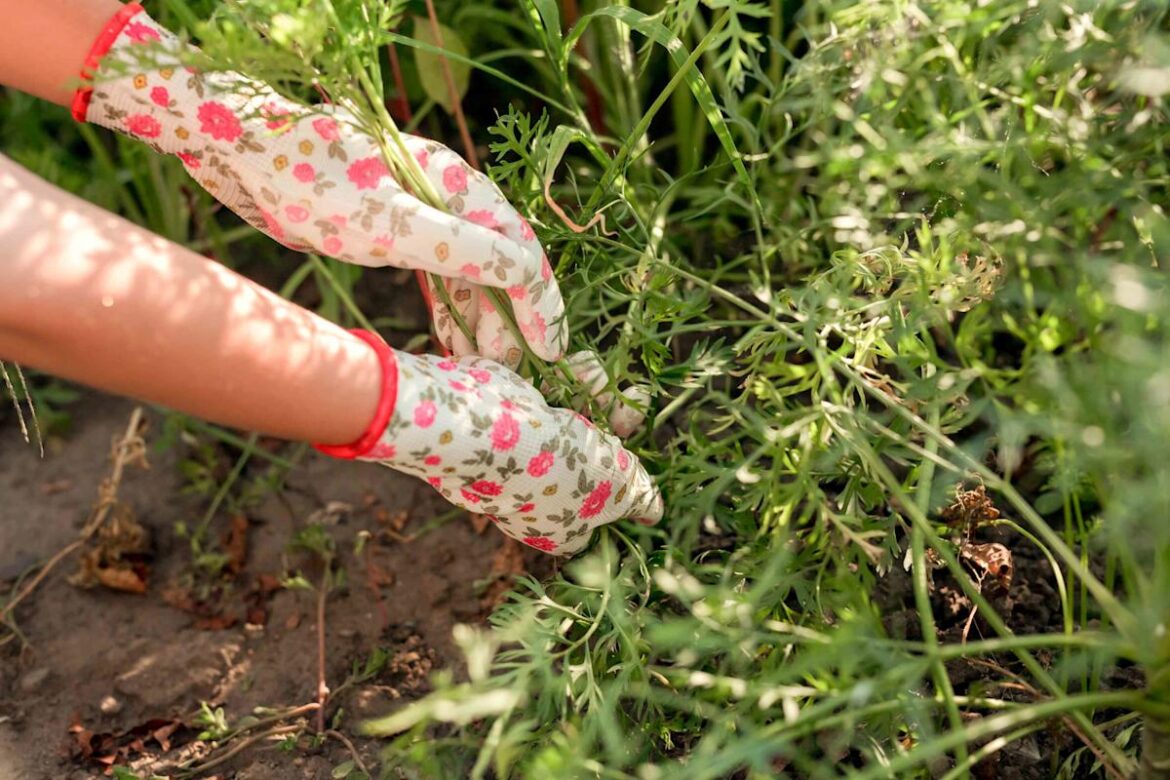We’re calling it—this is the summer that we all finally learn to tackle our weeds. Fighting those pesky and often invasive plants can sometimes feel like an uphill battle—but if you’re armed with the right knowledge, it can be a lot easier.
To learn more about addressing the problem from the root and pulling weeds the right way, we sought insight from two experts in the field.
Meet the Experts
Rob Palmer has worked in the landscaping industry since 2001. He’s the brand president of Lawn Squad, a company that offers comprehensive lawn care services and keeps yards weed-free nationwide.
Darren Muzzy is the director of sales and operations at Michigan Tree Experts, specializing in all things trees and gardening.
Why You Should Hand-Pull Weeds
Pulling weeds by hand is a tried and true method that’s effective and eco-friendly. When you pull weeds by hand, you can control the exact amount of pressure you apply to the weed and successfully remove its entire root.
While not every herbicide is harmful, spraying your lawn with certain chemicals can have a negative impact on your community’s waterways and wildlife. Additionally, some herbicides can harm your landscaping plants if you don’t apply them correctly.
Want more gardening tips? Sign up for our free gardening newsletter for our best-growing tips, troubleshooting hacks, and more!
Pull Them as Soon as You See Them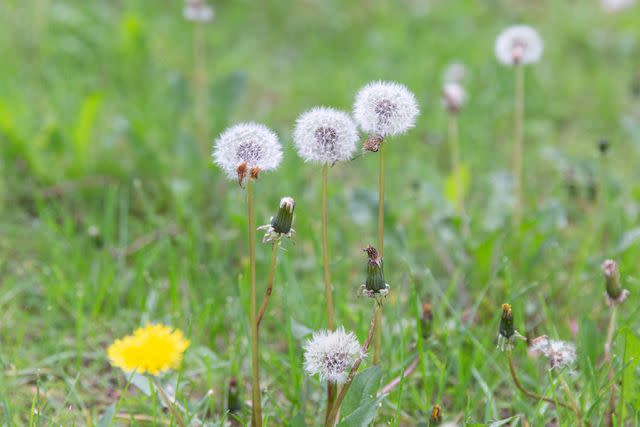
The Spruce / Candace Madonna
According to Rob Palmer, president of Lawn Squad, there are two main reasons why you shouldn’t procrastinate pulling weeds when you spot them.
First, weeds are easier to pull when they are small and haven’t developed large root systems to anchor them to the soil.
Second, this increases the chances of getting rid of that particular weed before it produces seeds—that will only mean more weeds to pull out later on.
Use Protective Gear
The Spruce / Viveka Neveln
Always wear thick gardening gloves when you pull weeds. Certain weeds contain thistles, which can make pulling them a painful experience if you go gloveless.
Additionally, Palmer swears by using a foam pad or knee pads while pulling weeds to make it an overall more comfortable experience.
Identify What You Are Pulling
The Spruce / Margot Cavin
Before touching any weeds on your lawn, make sure you identify what you’re pulling.
“The last thing you want to do is touch a weed with your hands, gloved or not, that would have been better sprayed with weed control,” Palmer says. He goes on to cite poison ivy as a good example.
Work With Wet Ground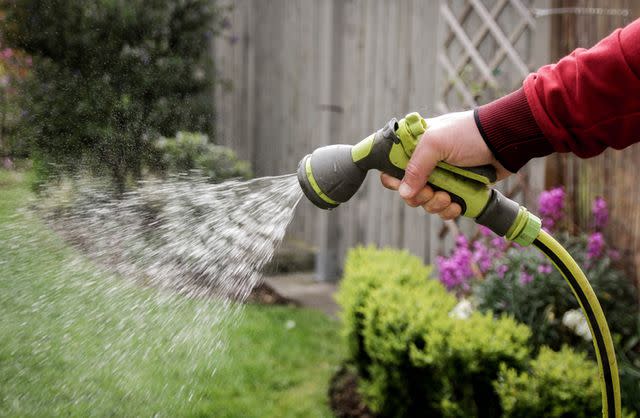
Kinga Krzeminska / Getty Images
Pulling weeds is much easier when you’re working with wet soil because it loosens the roots. Palmer says the best time to pull weeds is after a good rain. But if you’ve only got the time when the soil is dry, Darren Muzzy, director of sales and operations at Michigan Tree Experts, suggests soaking the soil for a bit with hose water.
Grab the Weed at Its Base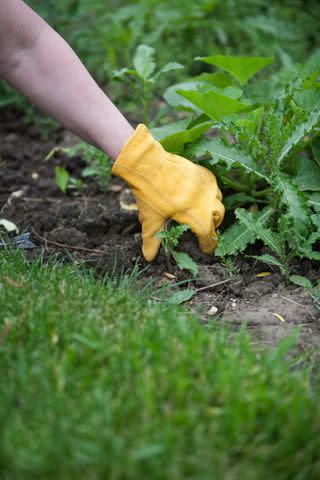
Pulling a weed, roots and all, can be a pretty satisfying experience. For a better chance at getting out those roots, position your hands as close to the base of the weed and ground as possible to prevent the top part from breaking off.
“The last thing you want is to do all that hard work just to have them pop back up in the same spot weeks later,” Palmer says.
Go Slow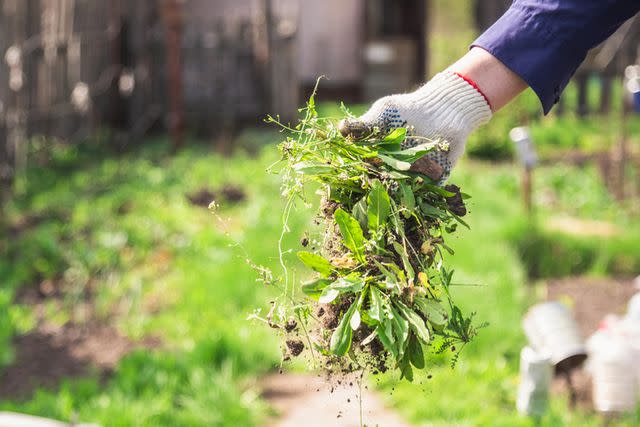
JohnAlexandr / Getty Images
Aside from proper positioning, Palmer says speed is also important for ensuring you remove the entire root. Applying too much force too quickly can cause the top part of the weed to break off from the root.
Know When to Use Tools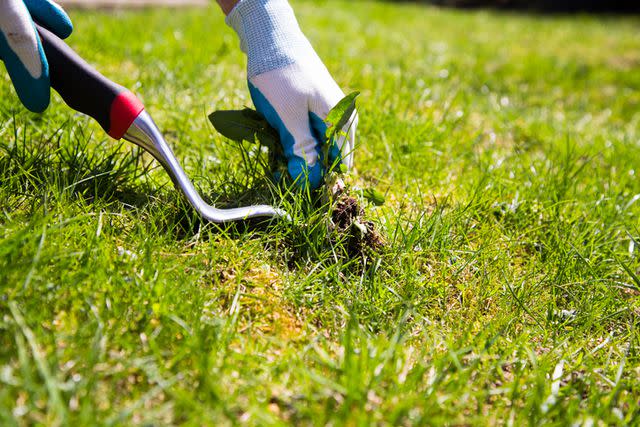
goldyrocks / Getty Images
While small weeds are often fairly easy to pull by hand, you may need to call in backup for some of the larger ones, and there are a range of weeding pulling tools available depending on your needs.
“For weeds with deep roots, it can be helpful to use a weed puller or trowel to remove the entire plant from the ground,” Muzzy says.
Shake Out the Roots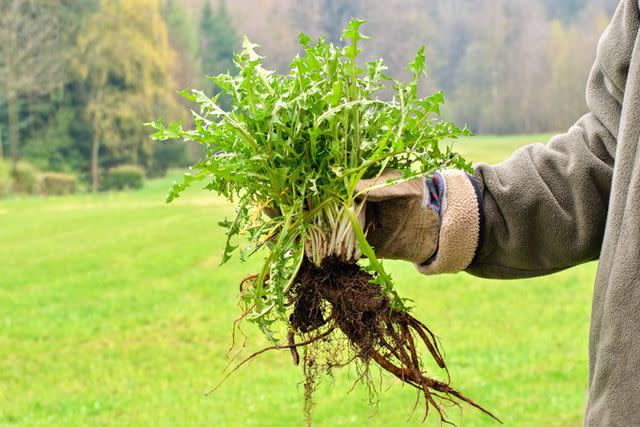
Weed root systems tend to retain a lot of soil when you pull them.
“Don’t waste all that good dirt,” Palmer says. “Give the root structure a couple of small taps or a gentle shake over your garden after pulling the weed to help loosen up any excess soil. “
Discard Weeds Properly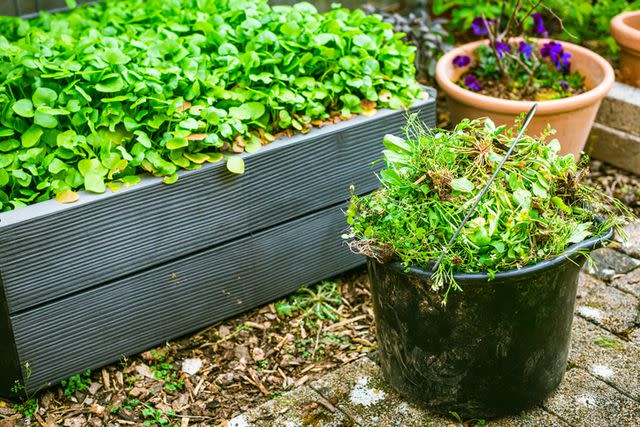
Leaving your pulled weeds in a pile on your lawn to deal with later is not a wise idea. Palmer notes that mature pulled weeds can go to seed and spread.
To prevent this, he recommends putting them in a bucket as you pull them to contain any seeds. Then, dispose of them in your trash or at your city’s yard waste plant.
Fill the Holes
The Spruce / Adrienne Legault
If you’ve just tackled an extra-large weed, you might be left with a noticeable hole in your lawn. Palmer says to fill the void with fresh soil and mix in some grass seed if needed.
Top Off the Area With Mulch
Once you’ve got your garden beds looking nice and weed-free, apply a fresh layer of mulch to the area.
“Laying down a thick layer of mulch helps to inhibit weed growth by blocking sunlight,” Muzzy says.

Faba-Photograhpy / Getty Images
Overseeding is another efficient way to prevent weeds and enhance the look of your lawn in the process. Planting new grass seed fills in the bare spots of your lawn that are susceptible to weeds.
“Making sure your lawn is thick and healthy can do wonders for preventing weeds,” Palmer says. “A lush, healthy stand of grass can outcompete weeds, keeping them from becoming a problem dealt with by means of manual pulling.”
Frequently asked Questions
What is the best way to pull out weeds?
The best way to remove weeds is manually by hand when they are small, and right after a rainfall.
Is it better to treat weeds or pull them?
Both treating weeds and pulling weeds can be effective, but pulling them by hand is a more eco-friendly choice.
Is it worth it to kill weeds?
It is worth the time and effort to kill weeds, because they can steal nutrients from your landscaping plants and grass.
Read the original article on The Spruce

